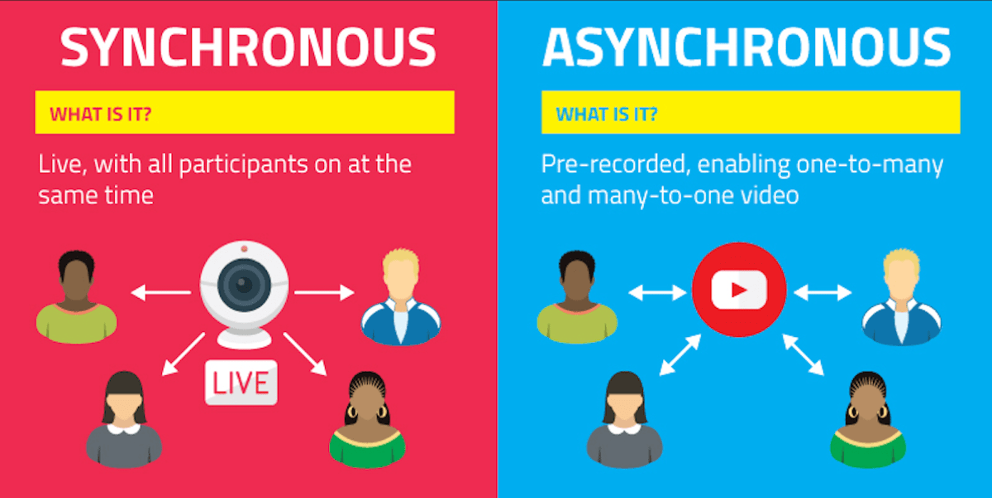by Chaya Gopalan, McKenzie C. Ferguson, Lynn Bartels
Having a firm grasp of designing and including activities to engage students can lead to a successful synchronous online course.
Introduction
When the global shutdown occurred due to COVID-19, faculty were not prepared for this abrupt transition. To assist in adapting teaching, the faculty development office at Southern Illinois University Edwardsville offered training sessions. The focus of the sessions was to adjust course design, enhance course delivery, and emphasize the importance of student assessment. Having a firm grasp of designing and including activities to engage students can lead to a successful synchronous online course.
The topics visited during the session included how to get and keep students’ attention, how to humanize online courses and express care for the students as fellow human beings, how to infuse courses with creativity while trying new methods, refining old techniques to get students excited about learning, and how to assess students’ growth regularly and offer personalized suggestions to help them move forward. Two new terminologies in the online course delivery, synchronous and asynchronous, became the new buzz words. Synchronous sessions refer to in-class, real-time virtual learning, while asynchronous is where students complete assigned work and learn on their own time.

Course Preparation

Not all educators were equipped for the abrupt shift to online learning. The transition from an in-person to an online platform was a stressful process. Establishing a solid foundation became critical when adjusting to synchronous online courses. Some essential components that should be considered when converting to synchronous learning are:
- Emphasize expectations (attendance, video, participation) clearly upfront.
- Create a welcome video for the course introduction.
- Set consistent deadlines and due dates.
- Provide regular reminders.
- Offer tips for students to get organized for online learning (UTEP Connect, 2017.)
- Organize learning materials, so they are simple and easy to find.
- Simplify the course page with clear labels and declutter unused course content and tools.
- Seek support from a peer consultant or instructional designer for clarity and organization.
- Notify students of resources and support systems such as the helpdesk within the institution as part of course preparation.
- Avoid introducing too much new technology or platforms unless you can demonstrate how to use them and gain added value (e.g., Microsoft Teams for a virtual class, document sharing, and instant chat).
Content Delivery

In order to keep students engaged, it is imperative to have enticing activities to deliver content. Maintaining students’ attention throughout class is necessary due to the distractions from being in the online setting. This session was to advise faculty on consistently involving students and enhancing understanding. The following are some of the most effective ways to convey and present content:
- Be vulnerable and humanize as an educator.
- Use appropriate technology such as Wacom tablet, Kahoot, Poll Everywhere, and Flipgrid, and provide varied and engaging course activities.
- Engage in a small group discussion or peer learning and assign roles.
- Use problem-based or debate-style learning.
- Caption any recorded lectures or content.
- Apply material during synchronous class times such as case studies, role plays, discussion questions.
- Provide feedback (1:1 as much as possible).
- Use games as a way to teach, assess, or reinforce learning.
- Consider collaborative note-taking.
- Virtual Synchronous Session.
- Adjust face-to-face activities.
- Use breakout rooms for small group discussions. Be sure to provide clear instructions about how to enter and exit the breakout room, get help, and work on during the breakout room, including how to report out in the main room.
Assessment of Student Learning

Feedback from instructor to students is even more critical in an online format. Assessments tie performance to specific objectives to provide meaningful feedback to students (“Assessing”). The following include practical approaches to assess student learning:
- Create reflective assignments (e.g., about COVID-19 and its impact on the discipline; what has been learned and what still needs to be understood; try reflection from a different viewpoint).
- Personalize feedback as much as possible.
- Recognize individual growth over time and recognize when students struggle with attendance, participation, and performance.
- Consider more frequent, lower-stake quizzes and assignments in place of examinations.
- Have students work outside of class for group projects.
- Offer student options for feedback and type of assessment.
- Connect with a handful of individual students each week.
Conclusion
When the global shutdown occurred due to COVID-19, faculty were not prepared for this abrupt transition. To assist in adapting teaching, the faculty development office at Southern Illinois University Edwardsville offered training sessions. The focus of the sessions was to adjust course design, enhance course delivery, and emphasize the importance of student assessment. Having a firm grasp of designing and including activities to engage students can lead to a successful synchronous online course.
References
Spreadsheet of Online Teaching Tools Chronicle Advice Guides: https://www.chronicle.com/article/how-to-be-a-better-online-teacher/
Teaching Without Walls (Michael Wesch – Anthropology): https://www.youtube.com/watch?v=D7vooDcxUaA&t=62s
Building Community in Zoom (by Rachel Toor): https://www.chronicle.com/article/turns-out-you-can-build-community-in-a-zoom-classroom
5 Ways to Connect with Online Students (Flower Darby): https://www.chronicle.com/article/5-ways-to-connect-with-online-students
Engagement Matters: Student Perceptions on the Importance of Engagement Strategies in the Online Learning Environment: https://files.eric.ed.gov/fulltext/EJ1073672.pdf
How to use a cell phone as a document camera: https://www.youtube.com/embed/QQsqDjlloAk
7 ways to organize your study space for success: https://www.utep.edu/extendeduniversity/utepconnect/blog/april-2017/7-ways-to-organize-your-study-space-for-success.html
Assessing Student Learning: https://cft.vanderbilt.edu/assessing-student-learning/
Authors
Chaya Gopalan, Ph.D., Associate Professor, Department of Primary Care & Health Systems Nursing, Southern Illinois University Edwardsville
McKenzie C. Ferguson, PharmD, BCPS Associate Professor, Pharmacy Practice, Director, Drug Information and Wellness Center, Southern Illinois University Edwardsville
Lynn Bartels, Ph.D., Professor, Department of Psychology, Director of Faculty Development, Southern Illinois University Edwardsville
